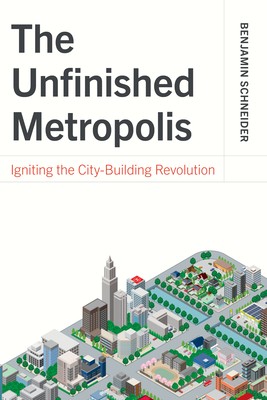
- We will send in 10–14 business days.
- Author: Benjamin Schneider
- Publisher: Island Press
- ISBN-10: 1642833533
- ISBN-13: 9781642833539
- Format: 0 x 0 x 0 cm, softcover
- Language: English
- SAVE -10% with code: EXTRA
Reviews
Description
Consider your surroundings. Maybe you're in a house or in an apartment building. Maybe you're at a desk in an office building, or in a café looking out on a lively main street. The urban landscape is not simply the backdrop to your life. It determines, to a remarkable degree, what kind of life you're able to live. Today, the horizons of American life are constrained by a built environment that has not significantly changed since the 1970s.
American cities used to constantly evolve, experimenting with new urban designs and ambitious infrastructure projects, from railroads and subways to public housing and shopping malls. But now we keep pursuing the same 20th century urban development plans--freeways, downtown office towers, suburban housing developments. This pattern is why Americans are so dependent on their cars, why housing is so expensive and homelessness is at crisis levels, and why downtowns are struggling and communities are fraying.
In The Unfinished Metropolis, Benjamin Schneider argues that city-building is a lost art. We need to embrace new transportation technologies, new types of housing, new ways to use streets other than for cars and parking. In this insightful and entertaining tour of the built environment, Schneider explores common urban designs that shape our lives and color our cultural imagination: office parks, apartments, single family homes, and transit systems. He explains how these forms came to be, why they no longer function as promised, and introduces readers to the advocates and professionals around the country who are working on transformative new solutions. Learning from past mistakes, we can remake our cities and create better lives for ourselves and future generations.
EXTRA 10 % discount with code: EXTRA
The promotion ends in 17d.02:37:43
The discount code is valid when purchasing from 10 €. Discounts do not stack.
- Author: Benjamin Schneider
- Publisher: Island Press
- ISBN-10: 1642833533
- ISBN-13: 9781642833539
- Format: 0 x 0 x 0 cm, softcover
- Language: English English
Consider your surroundings. Maybe you're in a house or in an apartment building. Maybe you're at a desk in an office building, or in a café looking out on a lively main street. The urban landscape is not simply the backdrop to your life. It determines, to a remarkable degree, what kind of life you're able to live. Today, the horizons of American life are constrained by a built environment that has not significantly changed since the 1970s.
American cities used to constantly evolve, experimenting with new urban designs and ambitious infrastructure projects, from railroads and subways to public housing and shopping malls. But now we keep pursuing the same 20th century urban development plans--freeways, downtown office towers, suburban housing developments. This pattern is why Americans are so dependent on their cars, why housing is so expensive and homelessness is at crisis levels, and why downtowns are struggling and communities are fraying.
In The Unfinished Metropolis, Benjamin Schneider argues that city-building is a lost art. We need to embrace new transportation technologies, new types of housing, new ways to use streets other than for cars and parking. In this insightful and entertaining tour of the built environment, Schneider explores common urban designs that shape our lives and color our cultural imagination: office parks, apartments, single family homes, and transit systems. He explains how these forms came to be, why they no longer function as promised, and introduces readers to the advocates and professionals around the country who are working on transformative new solutions. Learning from past mistakes, we can remake our cities and create better lives for ourselves and future generations.


Reviews